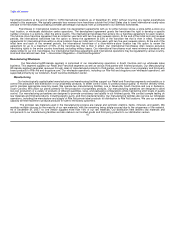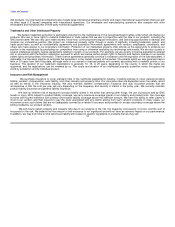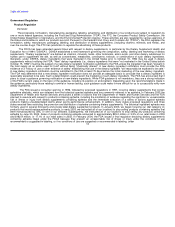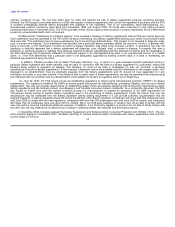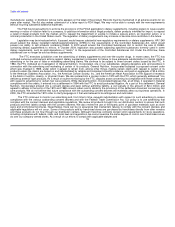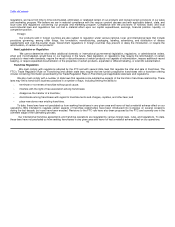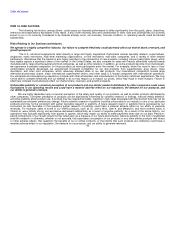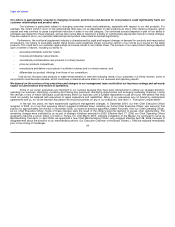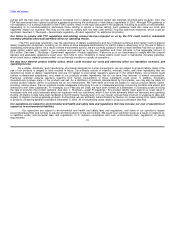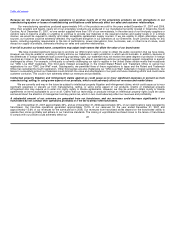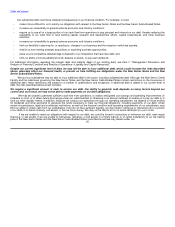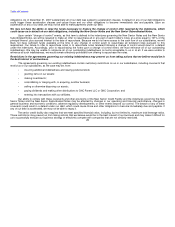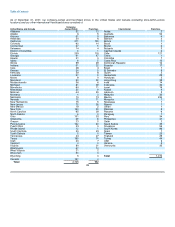GNC 2008 Annual Report Download - page 23
Download and view the complete annual report
Please find page 23 of the 2008 GNC annual report below. You can navigate through the pages in the report by either clicking on the pages listed below, or by using the keyword search tool below to find specific information within the annual report.
Table of Contents
Our failure to appropriately respond to changing consumer preferences and demand for new products could significantly harm our
customer relationships and product sales.
Our business is particularly subject to changing consumer trends and preferences, especially with respect to our diet products. For
example, the recent trend in favor of low-carbohydrate diets was not as dependent on diet products as many other dietary programs, which
caused and may continue to cause a significant reduction in sales in our diet category. Our continued success depends in part on our ability to
anticipate and respond to these changes, and we may not be able to respond in a timely or commercially appropriate manner to these changes.
If we are unable to do so, our customer relationships and product sales could be harmed significantly.
Furthermore, the nutritional supplement industry is characterized by rapid and frequent changes in demand for products and new product
introductions. Our failure to accurately predict these trends could negatively impact consumer opinion of our stores as a source for the latest
products. This could harm our customer relationships and cause losses to our market share. The success of our new product offerings depends
upon a number of factors, including our ability to:
• accurately anticipate customer needs;
• innovate and develop new products;
• successfully commercialize new products in a timely manner;
• price our products competitively;
• manufacture and deliver our products in sufficient volumes and in a timely manner; and
• differentiate our product offerings from those of our competitors.
If we do not introduce new products or make enhancements to meet the changing needs of our customers in a timely manner, some of
our products could become obsolete, which could have a material adverse effect on our revenues and operating results.
We depend on the services of key executives and changes in our management team could affect our business strategy and adversely
impact our performance and results of operations.
Some of our senior executives are important to our success because they have been instrumental in setting our strategic direction,
operating our business, identifying, recruiting and training key personnel, identifying opportunities and arranging necessary financing. Losing
the services of any of these individuals could adversely affect our business until a suitable replacement could be found. We believe that they
could not quickly be replaced with executives of equal experience and capabilities. Many of our executives are not bound by employment
agreements with us, nor do we maintain key person life insurance policies on any of our executives. See Item 11, "Executive Compensation".
In the last two years, we have experienced significant management changes. In December 2004, our then Chief Executive Officer
resigned. In 2005, six of our then executive officers resigned at different times, including our former Chief Executive Officer, who served in that
position for approximately five months. In November 2005, our board of directors appointed Joseph Fortunato, then our Chief Operating Officer,
as our Chief Executive Officer. Some of these changes were the result of the officer's personal decision to pursue other opportunities. The
remaining changes were instituted by us as part of strategic initiatives executed in 2005. Effective April 17, 2006, our Chief Operating Officer
resigned to become a senior officer of Linens n Things, Inc. Until March 2007, following completion of the Merger, he continued to serve as
Merchandising Counselor. In April 2006, we appointed a new Chief Merchandising Officer, who resigned effective April 28, 2006, because of
disagreements about the direction of our merchandising efforts. Our Executive Chairman of the Board, Robert J. DiNicola resigned immediately
prior to the closing of the Merger. 19



